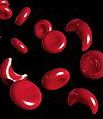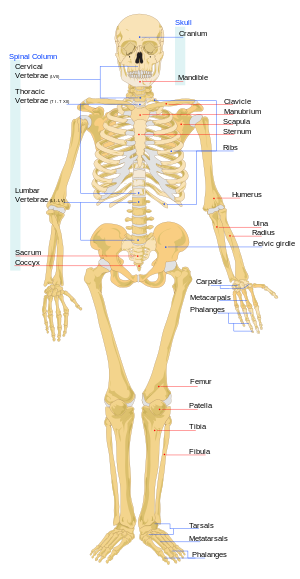
- Image via Wikipedia
They’ve found another surprising use for nitric oxide: pain relief for sickle cell anemia (SCA) patients. Pain is usually the main reason sickle cell anemia patients are admitted to the hospital—and by the time they get to that stage, doctors are way behind on addressing the problem.
Sickle cell anemis is an inherited disease in which blood cells take on an abnormal shape:
“Normal red blood cells are disc-shaped and look like doughnuts without holes in the center. They move easily through your blood vessels. Red blood cells contain hemoglobin (HEE-muh-glow-bin), an iron-rich protein that gives blood its red color. Hemoglobin carries oxygen from the lungs to the rest of the body.
Sickle cells contain abnormal hemoglobin that causes the cells to have a sickle, or crescent, shape. These cells don’t move easily through your blood vessels. They’re stiff and sticky and tend to form clumps and get stuck in the blood vessels. (Other cells also may play a role in this clumping process.)”
Pain is typically due to the fact that the sickle-shaped blood cells are not passing through the circulatory system at the normal pace. They tend to bunch up and cause pain at the site of the backups. as well as lead to “serious infections, and organ damage.”
Since nitric oxide tends to expand the blood vessels, you’d think it might help by letting the blockages flow more freely, but scientists are speculating that inhaling nitric oxide may also affect the hemoglobin directly, restoring normal shape and charge to affected cells. “The more normal negative charge helps cells repel each other, melts sticky polymers and may prevent new ones from forming,” according to Dr. C. Alvin Head, chairman of the Department of Anesthesiology at the Medical College of Georgia School of Medicine. In fact, he thinks “one of nitric oxide’s usual duties in the body is to help prevent clot formation.”
This doc thinks that once more research is done to confirm exactly how this NO treatment works for SCA, we might get to the point of giving SCA patients nitric oxide inhalers to prevent their own pain from requiring hospitalizations.
So, okay, I’m going to go out on a completely untested limb here. Since the first line of early defense when someone’s having a stroke (a clot somewhere in the body blocks blood flow to the brain) is to inject a clot-busting drug known as TPA, wonder if it makes sense that some day, instead of systemic drugs like coumadin, we might be able to give people nitric oxide inhalers to keep the blood thin and help prevent stroke. Of course, then we’d have to give people a way to measure their INR (a number telling you how thin your blood is) at home. Right now the only ways are: 1) get a blood draw and have it sent to a lab, or 2) get a finger stick and test it right in the office with a special machine. Hey, we educate diabetics to test their blood and adjust their diet for themselves. Perhaps this nitric oxide idea will take hold one day for heart patients and others who need blood thinners.
And here’s a really wild thought. Red wine helps promote the production of nitric oxide in the bod—it’s a natural blood thinner. And if you drink it regularly, you don’t need as much coumadin. Is there ever a time when it isn’t better to take less of a drug (except of course unless alcohol of any kind is contraindicated for other reasons)?
So maybe one day getting your INR (blood thinness measurement) to the “therapeutic” stage (whatever your doctor says it needs to be) will be a case of testing at home and then toasting at home with your glass of red wine! Now that sounds like a magic bullet I could get into.











![Reblog this post [with Zemanta]](http://img.zemanta.com/reblog_e.png?x-id=8cc8e7d7-e714-4889-8574-f90f22f34a79)
![Reblog this post [with Zemanta]](http://img.zemanta.com/reblog_e.png?x-id=359faa6c-4aa1-4f9e-b65f-aae15720b53d)